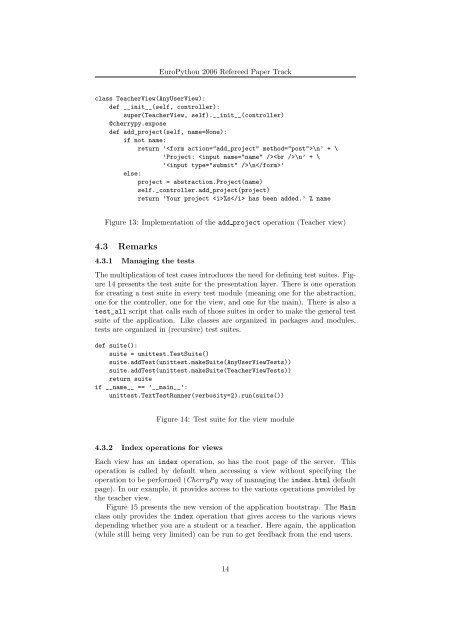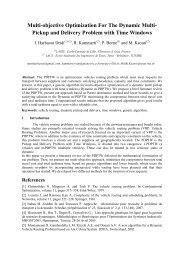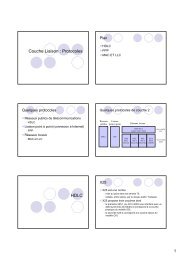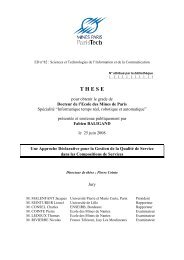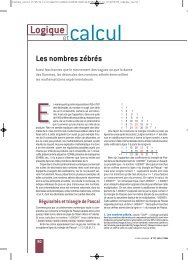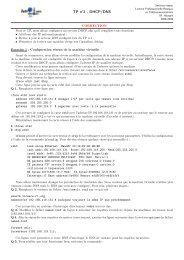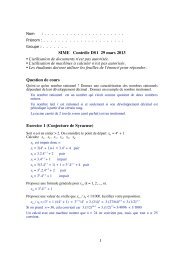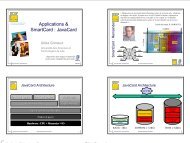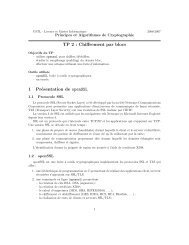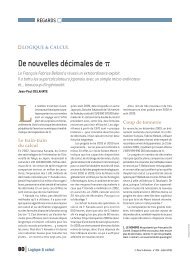An Introduction to Test-Driven Code Generation - LIFL
An Introduction to Test-Driven Code Generation - LIFL
An Introduction to Test-Driven Code Generation - LIFL
You also want an ePaper? Increase the reach of your titles
YUMPU automatically turns print PDFs into web optimized ePapers that Google loves.
EuroPython 2006 Refereed Paper Track<br />
class TeacherView(<strong>An</strong>yUserView):<br />
def __init__(self, controller):<br />
super(TeacherView, self).__init__(controller)<br />
@cherrypy.expose<br />
def add_project(self, name=None):<br />
if not name:<br />
return ’\n’ + \<br />
’Project: \n’ + \<br />
’\n’<br />
else:<br />
project = abstraction.Project(name)<br />
self._controller.add_project(project)<br />
return ’Your project %s has been added.’ % name<br />
Figure 13: Implementation of the add project operation (Teacher view)<br />
4.3 Remarks<br />
4.3.1 Managing the tests<br />
The multiplication of test cases introduces the need for defining test suites. Figure<br />
14 presents the test suite for the presentation layer. There is one operation<br />
for creating a test suite in every test module (meaning one for the abstraction,<br />
one for the controller, one for the view, and one for the main). There is also a<br />
test_all script that calls each of those suites in order <strong>to</strong> make the general test<br />
suite of the application. Like classes are organized in packages and modules,<br />
tests are organized in (recursive) test suites.<br />
def suite():<br />
suite = unittest.<strong>Test</strong>Suite()<br />
suite.add<strong>Test</strong>(unittest.makeSuite(<strong>An</strong>yUserView<strong>Test</strong>s))<br />
suite.add<strong>Test</strong>(unittest.makeSuite(TeacherView<strong>Test</strong>s))<br />
return suite<br />
if __name__ == ’__main__’:<br />
unittest.Text<strong>Test</strong>Runner(verbosity=2).run(suite())<br />
Figure 14: <strong>Test</strong> suite for the view module<br />
4.3.2 Index operations for views<br />
Each view has an index operation, so has the root page of the server. This<br />
operation is called by default when accessing a view without specifying the<br />
operation <strong>to</strong> be performed (CherryPy way of managing the index.html default<br />
page). In our example, it provides access <strong>to</strong> the various operations provided by<br />
the teacher view.<br />
Figure 15 presents the new version of the application bootstrap. The Main<br />
class only provides the index operation that gives access <strong>to</strong> the various views<br />
depending whether you are a student or a teacher. Here again, the application<br />
(while still being very limited) can be run <strong>to</strong> get feedback from the end users.<br />
14


